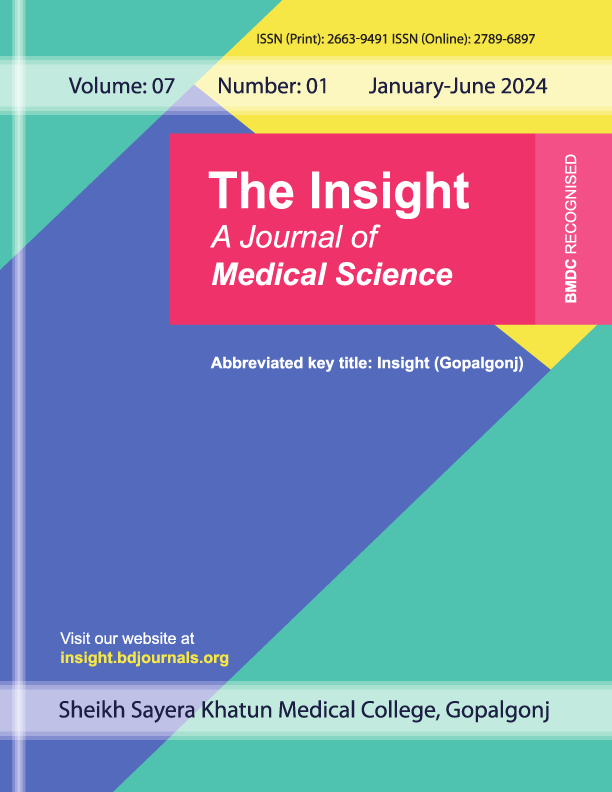Published 15-11-2024
Keywords
- Ovarian Cancer,
- Early Detection,
- CA-125,
- Transvaginal Ultrasound,
- Risk Prediction Model
Copyright (c) 2024 The Insight

This work is licensed under a Creative Commons Attribution 4.0 International License.
How to Cite
Abstract
Introduction: Ovarian cancer remains one of the most lethal gynecologic malignancies due to its often late-stage diagnosis. Early detection is crucial to improving survival outcomes, especially in high-risk populations. This study aimed to evaluate the efficacy of various ovarian cancer screening techniques, including serum CA-125 testing, transvaginal ultrasound (TVUS), and risk prediction models, in detecting ovarian cancer in high-risk women. Methods & Materials: This observational study involved 45 high-risk women, recruited based on family history and genetic predisposition. The effectiveness of screening techniques was assessed by comparing detection rates, sensitivity, specificity, and positive and negative predictive values for each method. Data were analyzed using SPSS, and the impact of each technique on early-stage detection and overall survival rates was evaluated. Results: Serum CA-125 testing demonstrated the highest detection rate at 44.44%, but also the highest number of false positives (15 cases). TVUS had a lower detection rate (33.33%) but exhibited higher specificity and a negative predictive value (90.0%). Risk prediction models, while highly specific (90.0%) and with the highest positive predictive value (66.7%), had the lowest sensitivity (50.0%). The combination of screening methods showed the most promise for improving detection accuracy. Conclusion: The findings suggest that a multimodal approach combining CA-125 testing, TVUS, and risk prediction models offers the best strategy for early detection of ovarian cancer in high-risk women. This combined approach can improve sensitivity and specificity while minimizing false positives, making it a valuable screening protocol for clinical use.



